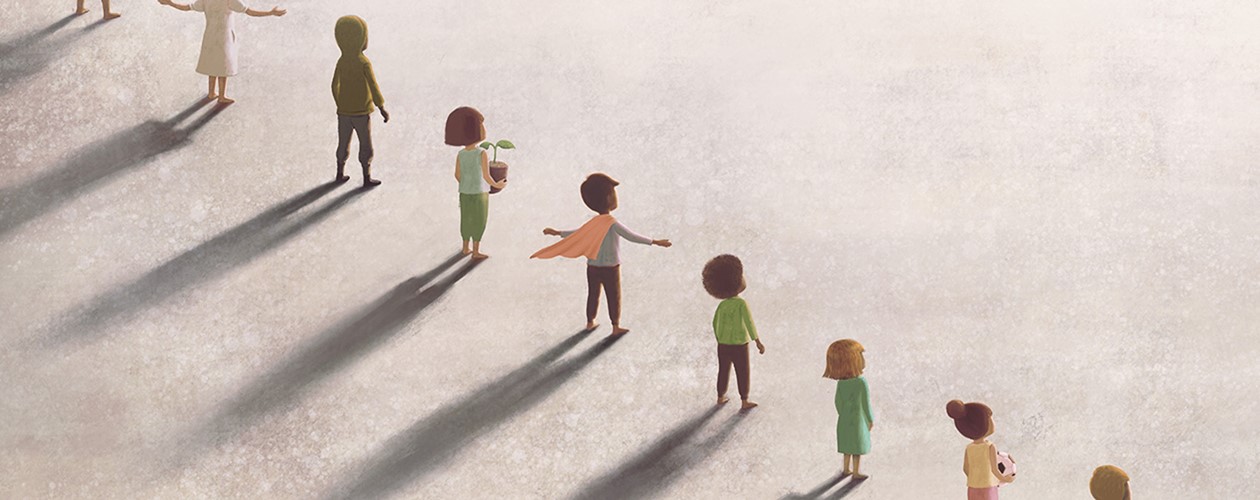
23 ways the world is getting better
“I am not an optimist. I am a very serious possibilist.” – Hans Rosling
You don’t have to look too far to find negativity these days.
Just watch the news, go on social media, or even have conversations with friends, family members, or co-workers.
You’ll likely hear or read about political instability, natural disasters, disease, or an endless list of bad news you can find 24/7 because of the free flow of information. Every year people label the current year 'the worst year ever' but these people have obviously never read a history book.
The combination the negativity and availability bias make it easy to assume the world is getting worse on a daily basis. Sometimes it feels as if we’re now taking one step forward and two steps back.
In reality, this is the greatest time in history to be alive. The world has seen an unbelievable amount of progress over almost any time horizon you look at. It’s just that bad news is an event or headline while good news is a process or statistic. Bad news makes for a better story and stories are what stick with us, not statistics.
I’ve read four books in recent years that make it clear just how much progress the world has experienced to get to this point (all four books were excellent):
- The Rise and Fall of American Growth by Robert Gordon
- The Better Angels of Our Nature by Steven Pinker
- Factfulness by Hans Rosling
- Enlightenment Now by Steven Pinker
Each of these books methodically goes through the data to show how human ingenuity and innovation have created massive progress around the globe.
Sometimes it’s good to have a reminder that progress is there even when it doesn’t feel like it. What follows are 23 amazing facts I found in these books that prove this out:
1. Over the last 20 years, the proportion of people living in extreme poverty has almost been cut in half.
2. The average life expectancy around the world today is 72. In 1800, among all babies who were ever born, roughly half died during their childhood. Life expectancy was just 30 years and no country had a life expectancy above 40. Life expectancy at birth was only 45 years in 1870.
3. Flying has gotten 2,100 times safer over the past 70 years. 2016 was the second safest year in aviation history. The odds of being fatally injured in a plane crash are just 0.000025%.
4. The real price of plane travel in the U.S. has fallen by more than half since the late 1970s.
5. The share of homes that had electricity in 1870 was exactly zero. Today the proportion of people with electricity is 85%.
6. In 1905, a Vermont doctor and his chauffeur were the first to successfully drive a car across country from San Francisco to New York. It took them 63 days. Today you can fly cross country in a matter of hours while using wireless Internet.
7. There was no entertainment available to the average family in 1870, except for a few traveling musicians or circus performers or in-home board or card games. Today our entertainment options are almost unlimited.
8. The average American now retires at age 62. One hundred years ago, the average American died at age 51.
9. The percentage of the population living past their 65th birthday was only 34% in 1870 but jumped to 56% by 1940 and 77% by 2000.

10. Up until the 1870s, people typically worked 11-12 hour days. By 1900, the typical worker put in 10 hours a day, 6 days a week. It wasn’t until 1940 that it came down to the standard 40-hour, 5-day workweek. And these weren’t office jobs sitting behind a desk. The conditions for most workers were terrible and hazardous to their health.
11. The proportion of people killed annually in wars is less than a quarter of what it was in the 1980s, one-seventh of what it was in the early 1970s, one-eighteenth of what it was in the early 1950s, and a 0.5% of what it was during World War II.
12. The world’s nuclear stockpiles have been reduced by 85% since the Cold War.
13. The world has gotten richer (as measured by Gross World Product) in 51 of the last 55 years.
14. Since 1960, the fraction of a person’s life taken up by work has fallen by 25% through a combination of shorter workweeks, more paid time off, and longer retirements.

15. Every single country in the world today has a lower infant or child mortality rate than it had in 1950.
16. Between 1961 and 2009 the amount of land used to grow food increased by 12%, but the amount of food that was grown increased by 300%.
17. Between 1950 and 2009, the rate of death in traffic accidents fell six-fold.
18. Roughly half of the adults in the world own a smartphone.
19. Just 7% of the world’s population lived in a free or relatively free society in 1850. Today that number is closer to two-thirds.
20. Early in the 19th century, 12% of the world could read and write. Today it’s 83%.
21. In 1820, more than 80% of the world was unschooled. It’s estimated that by the end of the century this number will be close to zero.
22. In 1920, just 28% of American teenagers ages 14-17 were in high school. The latest stats show over 80% graduated high school, of whom 70% went on to college.
23. In 1940, less than 5% of Americans held a bachelor’s degree. By 2015, it was up to one-third.
Adapted from: A Wealth of Common Sense, Ben Carlson, 6 April 2023
-

Quarterly market commentary - March 2023
Following an upbeat end to 2022, investment markets continued to deliver generally positive returns over the first three months of 2023. However, there are signs indicating the interest rate tightening cycle still had further to run.
-

Key market movements - March 2023
Global share markets delivered further positive results in the first quarter, buoyed by a reduction in recession concerns across leading developed markets.
-

12 ways to finally achieve your most elusive goals
It’s that time of year to muse on what you hope to accomplish over the next 12 months. The best advice when making resolutions is to set goals that are “SMART” – specific, measurable, achievable, relevant (to you) and time-bound. Once you’ve set your goals, what can help you achieve them? Based on our research, we’ve distilled 12 goal-enablers. These cover four broad principles you can use to keep yourself on track.
